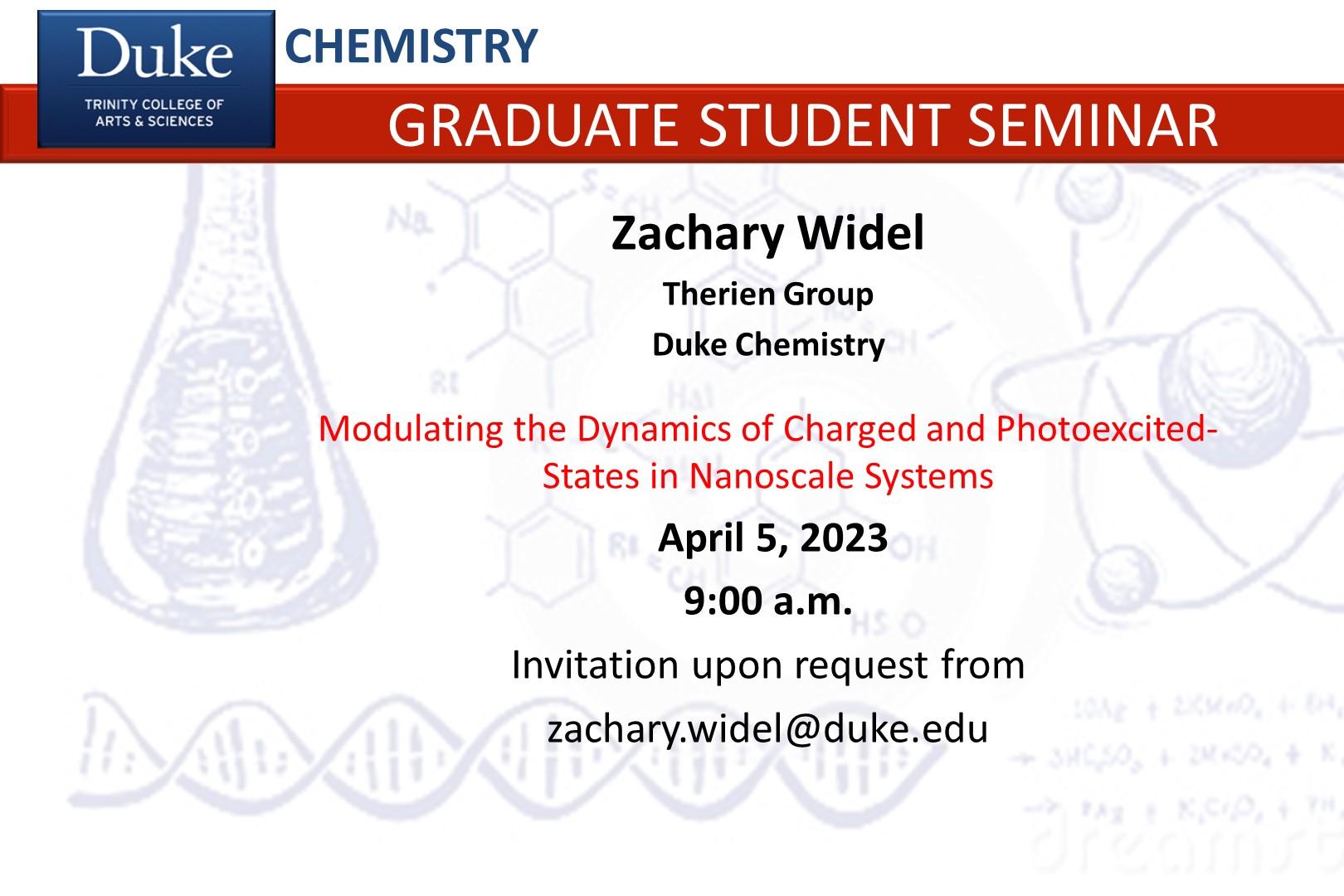
Zachary Widel, Ph.D. Candidate
Michael Therien, Ph.D., Advisor
Abstract: Light-matter interactions are fundamental to many critical emerging technologies - such as photovoltaics, photonic sensing, and information transmission - that rely upon the efficient capture of light and its conversion to useful energetic states. However, to realize these technologies as a viable future we must first understand the fundamental processes which govern and dictate the energetic, spatial, and temporal identity of materials following photoexcitation. As is suggested by the term "light-matter" both the qualities of the light and the structural composition of the material will influence these characteristics resulting from their interaction.
This dissertation investigates how photoexcitation conditions and material structure can be leveraged to modulate the energetic and charged states, and the dynamics thereof, which arise following photoexcitation of nanoscale and molecular systems. Employing ultrafast pump-probe transient absorption spectroscopy, this work characterizes the transient states which arise from photoexcitation of: (i) single-walled carbon nanotubes (SWNTs) wrapped by aryleneethynylene semiconducting polymers; (ii) covalently linked ethyne bridged porphyrin donor, rylene acceptor, molecular "ratchets" and (iii) rylene chromophores covalently linked to amino acid models. In nanoscale systems, this work highlights how the electronic structure of 1-dimensional SWNTs: (i) enable a complex interplay of excitation fluence dependent multi-body interactions, arising from the multitude of photogenerated energetic states, which may be harnessed to modulate the nature and lifetime of charge separated states and; (ii) give rise to a collection of heretofore ill-defined photoexcited-states with low energy optical transitions. At a molecular level, this work demonstrates how molecular structures can be engineered to: (i) utilize quantum coherence in a donor-acceptor "ratchet" which exhibit excitation frequency dependent uphill energy transfer, via vibronic mixing, to undergo electronically irreversible charge transfer and; (ii) selectively photooxidize amino acid analogues in biologically reminiscent photoreactions. These findings presented herein may be used to guide optoelectronic designs which efficiently guide and harness the charged and energetic species which arise from photoexcitation.